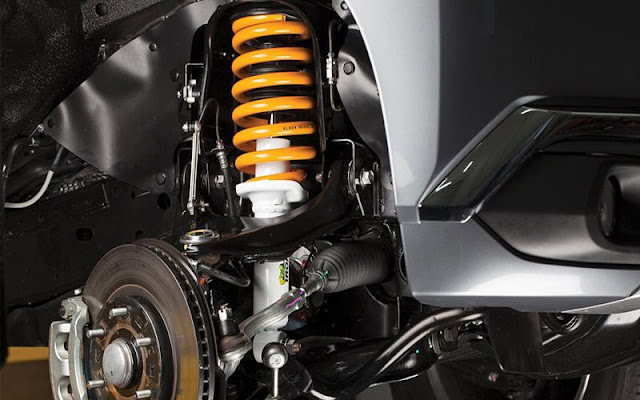Say Goodbye To Shakes And Bumps With Suspensions of Superior Quality
Many individuals complain about experiencing many shocks and bumps when driving. Their automobiles have completely lost the comfort they formerly provided. The majority of people decide to replace their old automobile with a new one when they consider their previous car's life has come to an end. They make this significant decision on their own, without consulting specialists. What happened to their automobiles? Are their automobiles ancient and obsolete? This is not the case. Bump and shocks are very frequent symptoms of a malfunctioning suspension system in your automobile. In places like Batemans Bay, Suspension components isolate the vehicle's bumpers from the road. Additionally, these suspensions keep a vehicle from collapsing. Even on a flat road, a car with broken or faulty suspensions will cause you to shudder. Without suspensions, these tremors and bumps would go directly to the car's frame, which might have serious consequences. Wheels might lose touch with the road surface and even collide with it. Damaged suspension coils are the only cause of a difficult-to-steer ride.
Suspension coils contribute to your driving comfort in a variety of ways. These include the following:
Steering Control: These suspensions keep the wheels centred about the road surface. Additionally, these components protect the car from sliding or toppling over at a road corner.
Suspension ensures that the wheels follow the contours of the road. Multiple suspensions are installed in the vehicle, resulting in a little increase and decrease in tyre load. Tires must maintain contact with the road surface to generate friction, which is required for stopping and acceleration.
Avoid High-Frequency Quivering: Appropriate spacing between the suspension joints is required to prevent transmission of any "road noise" to the vehicle's body.
Driving Comfort: Suspension systems enable the automobile to favourably respond to the forces generated by the tyres during acceleration, longitudinal braking, and lateral turning.
Suspension systems are classified into two categories based on their usage of springs (torsion bars, coil springs, and leaf springs) and shock absorbers. These include the following:
Independent Suspension: With this suspension type, the vehicles' front and rear wheels are independent of one another, as are the wheels on the opposite side.
The exception to this suspension type is the presence of an anti-roll bar that connects the two wheels and prevents the vehicle's suspension from rolling as it bends.
Independent suspensions are available in a variety of configurations, including coil spring type 1, coil spring type 2, trailing-arm, multi-link, twin I-beam, transverse leaf spring, and Moulton rubber.
Reliant Suspension: In this suspension style, the vehicle's front and rear wheels are dependent on the opposing side's wheel.
Modern trucks and off-road vehicles use this suspension technology.
Suspension systems are vitally necessary for a comfortable, stable, and traction-enhancing ride in areas like Batemans Bay.
Suspensions for Medium and Heavy Duty
The Gross Vehicle Weight (GVW) of medium-duty and heavy-duty vehicles determines its rating (GVW). All trucks have several fundamental characteristics, but the distinction is in the design of a stronger chassis, improved suspension, and lower transmission and drive-axle ratios to cope with steep terrain.
Medium Duty trucks: A medium-duty passenger truck has a gross vehicle weight of between 6,001 and 8,500 pounds and is designed for urban transport; it is nimble, comfortable, has a low step-in height, and increased heating and cooling system, a large interior, and provides a noise-free ride. It is a subcategory of heavy-duty vehicles and includes all big sport utility vehicles and passenger vans.
Additionally, these suspensions are adaptable; while they are specifically manufactured for each application, they may be converted to a wide variety of medium-duty vehicles. The suspension spring's double-bonded rubber bushing, as well as the pivot point, acts as a lubricant; hence, no additional lubrication is required. In terms of suspension quality, it is a lightweight design that is capable of high performance. The single-leaf design and adjusted geometry of the suspension ensure inherent roll stiffness and optimal stability during acceleration, braking, and other handling.
Heavy-Duty Vehicles are those that have a Gross Vehicle Weight of 8,501 pounds or more and are fitted with heavy-duty engines. Heavy-duty trucks are used to move freight or large objects and are commonly used to transport products and machines. Heavy-duty vehicles include all off-road vehicles such as big pickup trucks, buses, delivery trucks, leisure vehicles, and semi-trucks. We cannot conceive of any industry functioning without these heavy-duty vehicles.
Suspension characteristics of a heavy-duty truck: Rubber suspensions, air suspensions, spring suspensions, and solid mount suspensions are all employed in heavy-duty trucks. Suspension capacities range from 40,000 to 120,000 pounds. Suspension kits for heavy-duty vehicles are available as conversions or full kits.
Finally, while a well-tuned suspension system is critical for the smooth running of a motor vehicle, consumers are more concerned with fuel efficiency and reducing their carbon footprint.
Conclusion:
To summarise, the prospect of flying on an overcrowded plane makes us shiver - so why on earth would we risk driving an overloaded truck? Your life may be at stake if you drive within the capabilities and limitations of your equipment. Always weigh your rigs on a public scale and, if they are overweight, make every effort to put them back within their set weight restrictions. You can get in touch with our team to know more about suspension in Batemans Bay.
Disclaimer: This is generic Information & post; content about the services can be changed from time to time as per your requirements and contract. To get the latest and updated information, contact us today or visit our website.



Comments
Post a Comment